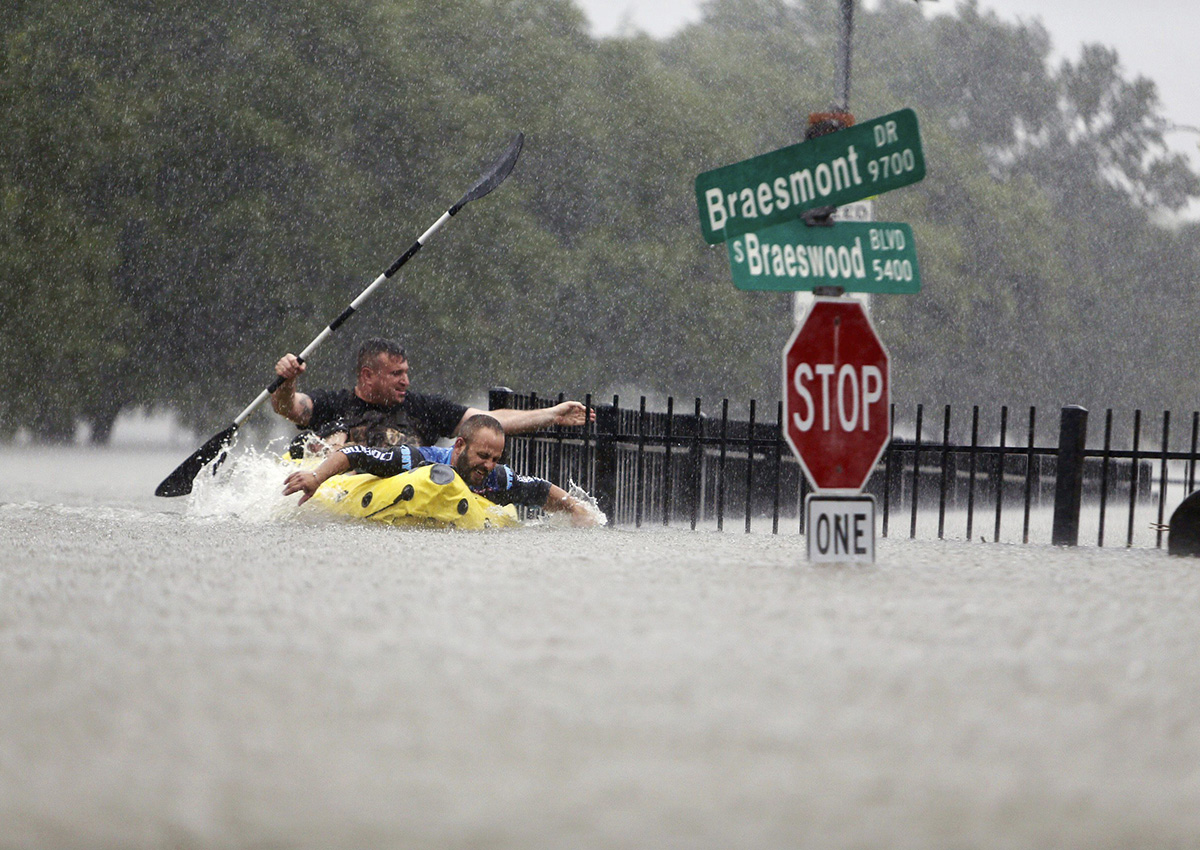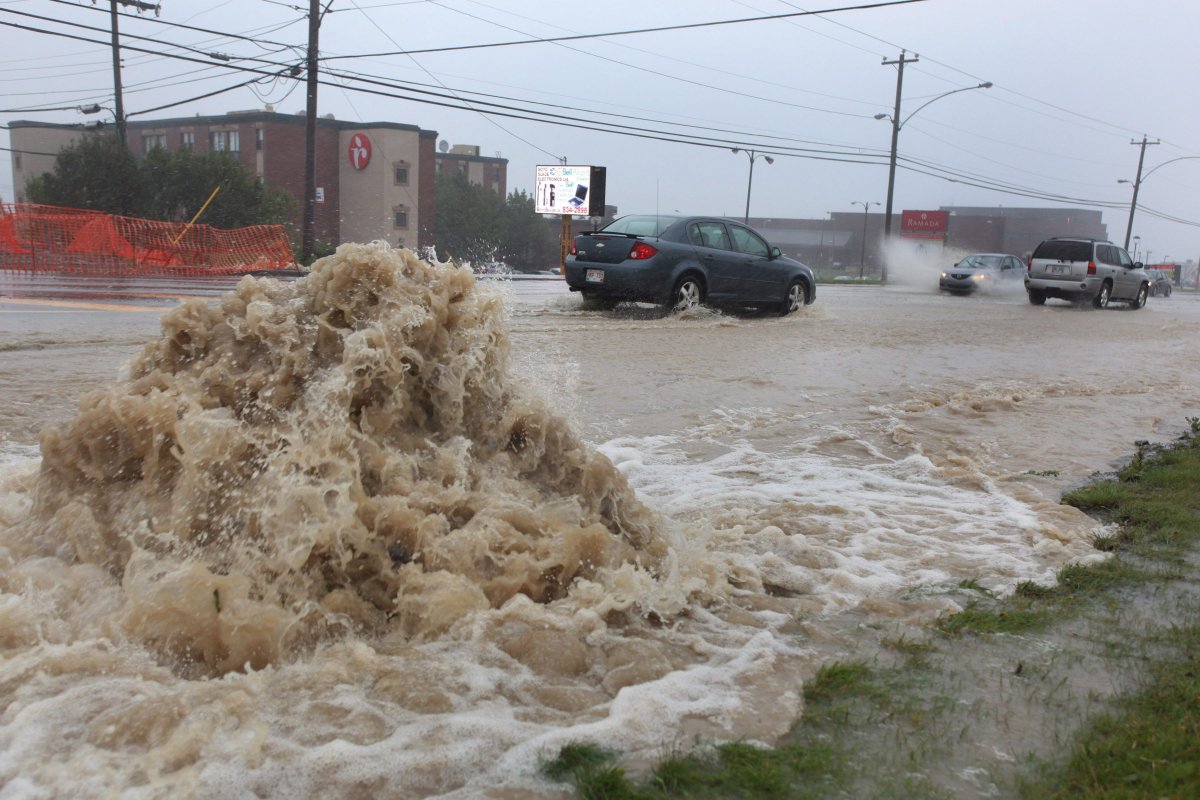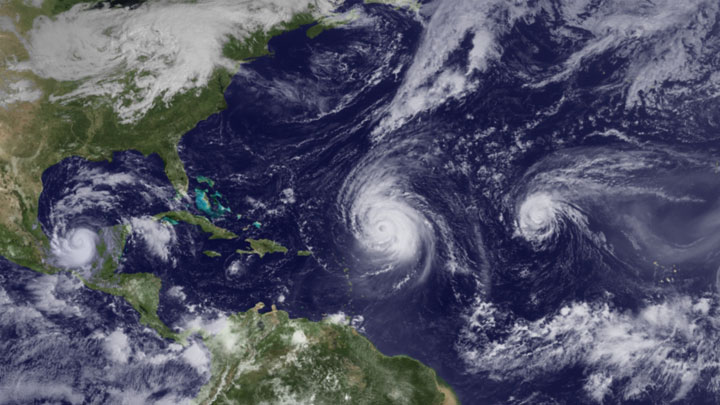As residents in Houston continue to feel the devastating effects of Hurricane Harvey, another storm could be brewing and heading to Atlantic Canada.

Harvey, which made landfall late Friday as a Category 4 hurricane and dropped heavy rain as a tropical storm, sent destructive floods into Houston and forced thousands of people to flee their homes.
The storm has not had a significant impact on Canada, but Halifax meteorologist Jim Murtha said the system currently developing in southern U.S. could bring heavy rainfall and strong winds to parts of Atlantic Canada mid-next week or beyond.
If the storm forms and unfolds with tropical characteristics, he said the next name on the list is Irma.
Canadian cities and towns aren’t hit as hard as places in the United States, but hurricanes and tropical storms can have a significant impact on the country, especially on the east coast.
In fact, the Canadian Hurricane Centre was created in 1987 after it became clear that Canadians needed an expert source for information that was focused specifically on how tropical cyclones affect Canada. Before the creation of the centre, Canadians relied largely on forecasts from the U.S. for hurricane information.
WATCH: Hurricane Harvey’s impact felt by Albertans

What exactly are hurricanes?
Hurricanes are made up of masses of warm, humid tropical air with high winds exceeding 118 km/h and torrential rains. When a hurricane reaches land, it pushes a wall of ocean water ashore, which is called a storm surge, according to NASA. Heavy rain and storm surge from a hurricane can cause flooding.
The storms have a life span of one to 30 days and occur most often during August and September though the season runs from June to November, according to the Institute for Catastrophic Loss Reduction.
Sometimes these powerful storms — or their remnants — remain strong enough as they track up the Atlantic coast from the Caribbean to reach parts of eastern Canada.
Canadian regions more affected?
Atlantic Canada is most at risk for hurricanes and tropical storms, according to Global News’ chief meteorologist, Anthony Farnell.
“Especially Nova Scotia,” he said. “On average they get one hurricane every three years in Atlantic Canada.”
WATCH: Rising global temperatures could increase intensity of Atlantic Canada hurricanes

However, areas of central Canada, like Ontario and Quebec, can be affected by gusty winds and torrential rain when hurricanes move across the U.S., Farnell said. But many of these storms typically lose strength as they move over land.
For example, in 2011 the post-tropical storm Irene, had a significant and deadly impact on Quebec. The storm brought a massive rain shield which extended from Kingston, Ont., to Halifax, N.S., and from New Jersey to Newfoundland and Labrador.
At its worst, Irene’s winds topped 113 km/h east of Quebec City and rainfall amounts approached 170 millimetres in just a few hours. It caused basements to flood, roads to collapse and triggered landslides — even killing a Montreal motorist.
British Columbia has very rare encounters with Pacific hurricanes.
How big are hurricanes in Canada?
According to Environment Canada, a hurricane stronger than Category 3 (Hurricane Katrina was a Category 5) is virtually impossible in Canada because the country’s water temperatures – even when they are warm – are simply too cold to support such a storm.
A Category 3 (or higher) hurricane would have to be moving rapidly towards Atlantic Canada, with warmer-than-usual coastal waters and the right atmospheric conditions to be present for the storm to keep its strength.
“When storms reach Atlantic Canada, they are weakening because of water around is just too cold to maintain it,” Farnell said.
“It’s also quickly moving because of the jet stream, meaning hurricanes are unlikely to sit around for five days like they are doing with Harvey.”
Past Canadian hurricanes
2010: Hurricane Igor
Hurricane Igor was one of the biggest storms to hit Newfoundland. It wreaked havoc on the area when it struck Sept. 21, 2010. The Category 1 storm caused $200 million in damage and led to one death. Environment Canada called the storm the province’s “worst by far.”
2007: Hurricane Noel
In November 2007, the coast of Nova Scotia was battered by Hurricane Noel, which knocked out power to more than 170,000 homes and business in the province after battering the Caribbean and U.S. east coast.
Heavy rain and winds reaching 180 km/h washed out roads and uprooted trees. Damage was reported in Prince Edward Island, New Brunswick, Newfoundland and even eastern Quebec.
2003: Hurricane Juan
One of the most powerful hurricanes to ever hit Canada was in September 2003 when Hurricane Juan struck the eastern shores of Nova Scotia. Eight people were killed as Juan ripped through the province, causing $200 million in damage and leaving 300,000 people without power for two weeks.
The storm brought winds of 140 km/h, tearing down hundreds of kilometres of power lines and about 100 million trees. Huge waves destroyed marinas all along the coast.
WATCH: Hurricane Juan anniversary
1978: Hurricane Ella
This storm moved into Canadian waters as a Category 4 storm with maximum sustained winds of 215 km/h, making Ella’s winds the strongest in over 100 years to be recorded inside Canadian territory, according to Environment Canada.
1954: Hurricane Hazel
Perhaps the most destructive hurricane in modern Canadian history ripped through southern Ontario in October 1954 after crossing the Caribbean and eastern U.S.
Hurricane Hazel left 81 dead and a path of destruction in its wake. Almost 2,000 families were left homeless as winds hit 124 km/h and rains flooded low-lying areas.
The Greater Toronto Area was the worst hit. The Humber River swelled and broke through a footbridge, washed away an entire block of homes along the edge of the river. More than 200 millimetres of rain fell in 24 hours – the worst flooding in Toronto in 200 years.
The Galveston Hurricane: 1900
It is estimated that between 52 and 232 people were killed after the remnants of this hurricane crossed into Eastern Canada between Sept. 12 and Sept. 13, 1900.
The hurricane began in the Atlantic Ocean before crossing over Cuba and making landfall in Galveston, Texas. It is estimated that the Galveston Hurricane was a Category 4 and by the time it reached Canada, it is believed that it was still at hurricane strength, but down to a Category 1.
Are hurricanes increasing in Canada?
The frequency of tropical storms and hurricanes in the Atlantic changes every year, according to Environment Canada. Hurricane formation is usually cyclical; with an increase in storm activity for a 25-year period, followed by a decrease in storm activity for 25 years.
Atlantic Canada is currently in a “warm cycle,” which can lead to an uptick in stronger storms, Farnell said. And, we’re not out of the woods yet, he added, as hurricane season peaks in mid-September in Canada.
WATCH: Canadian east coast preparing for oncoming harsh storms
— With files from the Canadian Press

















































Comments